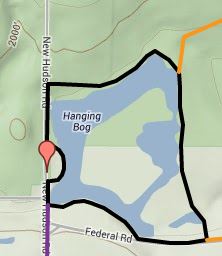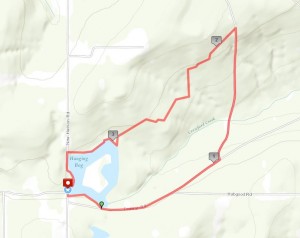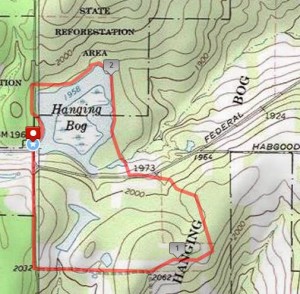What does July mean to you? We certainly recognize it as the middle of the summer season. On the 4th day, we celebrate a mid summer holiday. For most of us, it’s a day off work, dinner on the grill, maybe fireworks, without a thought of why. Most people seem to call the day, the 4th of July. Sounds like just a day on the calendar. What do you know about the day that this date celebrates? Have you ever read the Declaration of Independance?
In July of 1776, a group of men assembled in a building in Philadelphia, with a single purpose. They represented the colonies that were formed by the British crown on this side of the Atlantic, with the purpose of forming a self governing united nation, free of the Crown’s will. But, there was something different about this revolution. Most revolutions, in history, have been organized by representatives of the poorer, lower classes. But, these men in Philadelphia were men of means. They owned established and successful businesses and were some of the wealthiest men in the colonies. In most revolutions, the leaders had nothing to lose and everything to gain. These men had everything to lose, and nothing to gain, exept one thing.
Virginia representative, Thomas Jefferson, presented the assemblage with a draft of a document for their consideration. As often happens, disagreements ensued over petty points in the document. These arguements might have lasted for quite some time, if external conditions had not conspired to end them.
As July came to Philadelphia, a severe wave of mid summer heat and humidity descended upon the city. With air conditioning not yet invented, the only releif from these conditions, inside a building, was an occasional merciful breeze through an open window. Another factor added more to the misery.
While we may complain about exhaust from automobiles, the “exhaust” from the major mode of transportation at that time, laying in the streets, formed a breeding ground for certain flies, the females of which use blood as a rich protien scource for the developing embryos in their eggs. High temperatures shorten development time. Remember the open windows, and screens weren’t invented yet, either. As the 4th day of July dawned, between the heat, humidity and biting flies, one can only imagine the conditions inside that building. Think such conditions might induce one to put petty points aside, go up and sign the document, and go out to try to get some relief? That’s exactly what happened in that building, that day.
If you didn’t read the Declaration, do you remember the last sentence? “We solemnly pledge to each other, our lives, our fortunes, and our sacred honour.” This was not an idle pledge, for the British Crown came to consider the document an act of treason, a capitol crime, and all who signed the document, guilty of it.
As the men in the newly declared country fought the well organized British army, some army units were assigned the mission of seeking and capturing the declaration signers. The soldiers succeeded in capturing a few of them. They were then shipped off to England, where they were “tried” and hanged. They paid with their lives.
Some others, finding out about the advancing British army units, fled their homes, thereby avoiding capture. However, they couldn’t take with them, the businesses they had built. The British burned down everything on their property, destroying everything they owned. These former wealthy businessmen lost all they had and, although they escaped capture, they lived the rest of their lives and died in poverty. They paid with their fortunes.
And so, as we wake up on this Independance Day and start getting ready for our barbecues and other activities, perhaps we can also give a fleeting thought to that hot, sticky July day, when a group of devoted patriots walked up to the podium, to pledge their lives, their fortunes and their sacred honor.
And a nation was born.
 First off everybody starts off South on New Hudson Rd. The Naturalists will take the Bog Trail a little over a mile and a third around the bog. This is pretty self explanatory as keep the bog to your left and/or follow red marks on trees. This is only important after re-entering from Federal Rd. and after you reach the campsite very near to New Hudson Rd. Otherwise you just keep the bog to the left.
First off everybody starts off South on New Hudson Rd. The Naturalists will take the Bog Trail a little over a mile and a third around the bog. This is pretty self explanatory as keep the bog to your left and/or follow red marks on trees. This is only important after re-entering from Federal Rd. and after you reach the campsite very near to New Hudson Rd. Otherwise you just keep the bog to the left. The Climbers will do a loop a bit less than 4 miles. They will start out with the Naturalists but when the Naturalists re-enter the bog trail from Federal Rd. they will continue on down (veer to left) and make a left at the Hanging Bog WMA sign. At the access road continue down it for a mile or so and enter at the orange forestry tape hanging from the tree branch on the left. If you reach the orange tape trail on right, or the turn around, you have gone too far. This trail takes us through a variety of habitats and we can see some damage from the recent flash floods which swamped several cars at a nearby grad party. Three inches fell in one hour!
The Climbers will do a loop a bit less than 4 miles. They will start out with the Naturalists but when the Naturalists re-enter the bog trail from Federal Rd. they will continue on down (veer to left) and make a left at the Hanging Bog WMA sign. At the access road continue down it for a mile or so and enter at the orange forestry tape hanging from the tree branch on the left. If you reach the orange tape trail on right, or the turn around, you have gone too far. This trail takes us through a variety of habitats and we can see some damage from the recent flash floods which swamped several cars at a nearby grad party. Three inches fell in one hour!
